The History of Selsey Lifeboat Station
The Lifeboat and it's crew have been at the centre of life in Selsey since it's first station was built in 1861. Through many changes and two world wars, the station has endured.
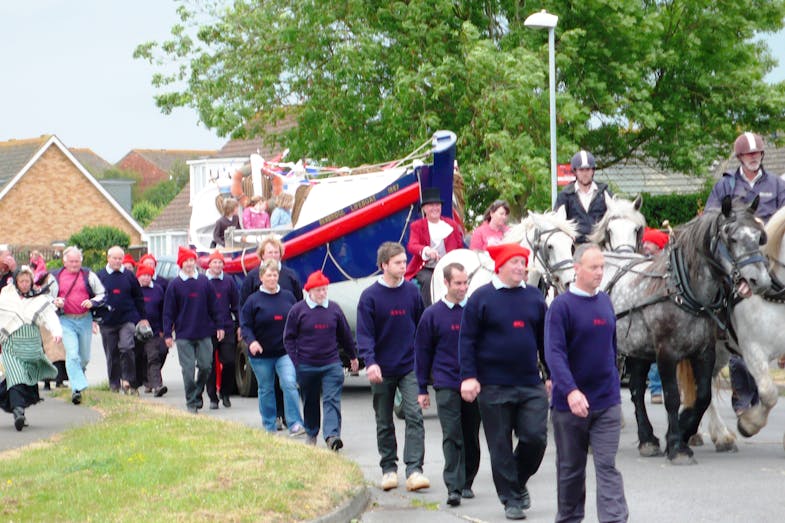
In 1860, after a series of meetings held in Chichester, it was decided that a lifeboat station would be established in Selsey – then a tiny fishing village.
A lifeboat house was subsequently built and on 5th June 1861, the former Skerries Lifeboat was taken to Chichester and displayed, with a demonstration of its abilities put on by the new crew in front of a crowd of over 2000. This Lifeboat christened “The Friend”, was then brought to Selsey, drawn by four horses.
This arrival was re-enacted in 2011 on the 150th anniversary of the Selsey Lifeboat Station using a vintage lifeboat from the Isle of Wight.
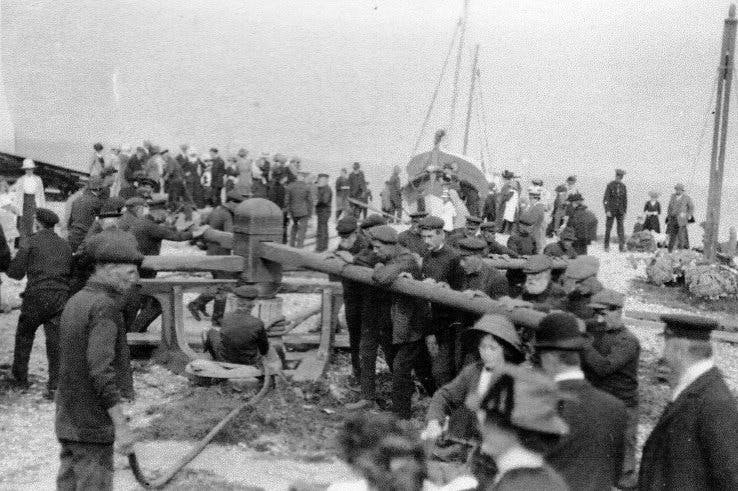
The Friend was in service in Selsey for just four years and only launched to a rescue twice in this time, the first on 23rd January 1863 to a schooner stricken by south-westerly gales and the second on 5th September 1864. This time a brig, “Governor Maclean” was wrecked on the Owers, a rock formation approximately 11km off the coast of Selsey. The crew of the lifeboat rescued 7 members of the ships personnel with the 5 remaining being helped by a passing sailing ship.
Between 1861 and 1913, lifeboats were launched by manually pulling the boat over wooden skids laid over the beach which was both heavy work and enormously time consuming. In order to ease these problems, it was decided that a new wooden slipway would be constructed, sited to the west of the brick-built boathouse and have the lifeboat sitting on the top of this slipway, in the open air. This solution did not prove ideal however and in 1919 a new concrete slipway was built, leading out from the lifeboat house and running slightly uphill for 75 yards until out over deep water before the launching slip started. The lifeboat itself sat on a trolley which ran on rails and was hauled using ropes. Once at the top, the trolley would tip and the boat would be released to slide smoothly into the sea.

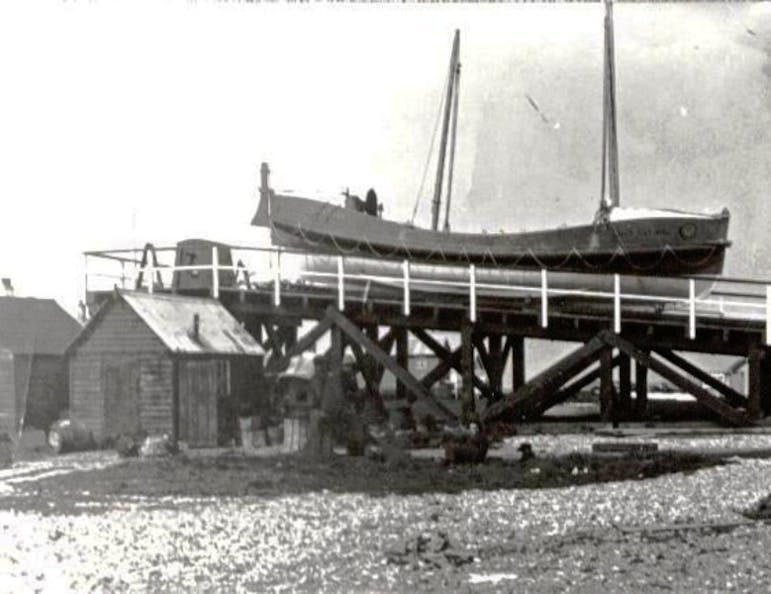
In the 1920s, coastal erosion became a major issue in Selsey, perhaps due to a change in the tidal flow caused by concrete defence blocks placed during the First World War. At the time, the coast was eroding at an average of 20 feet per year and the lifeboat house, originally constructed at the very back of the beach, was now in danger. It was decided that a second boathouse would be built on the concrete slipway, over the approach gangway, negating the need for the trolley track.
This was the system of launch during the Second World War, during which the lifeboat was deployed 50 times, 38 of which to crashed, or reported crashed aircraft. On a lot of these calls, the crews were only able to identify wreckage, patches of oil or bodies although they did save several airmen. One of these airmen, Squadron-Leader J.R.A Peel escaped from his burning Hurricane, hit by a ME 109, and parachuted into the sea some way off of the Selsey Bill. Luck was on his side as the lifeboat crew, coxed by Les Pennycord along with bowman Len Lawrence, were already out searching for the crew of a Nazi bomber and saw the pilot’s peril. With all speed they raced to his landing point, located him and picked him from the water. Unharmed, the Squadron-Leader came back to shore with the crew and after a quick medical check-up, phoned nearby Tangmere airfield to request transportation back to base. Three hours after being shot down, Squadron-Leader J.R.A Peel was in the air once again, leading his squadron back into the aerial battle. For this and many other such tales, J.R.A Peel was awarded the Distinguished Flying Cross and remained forever grateful to the members of the Selsey Lifeboat Crew who saved his life.
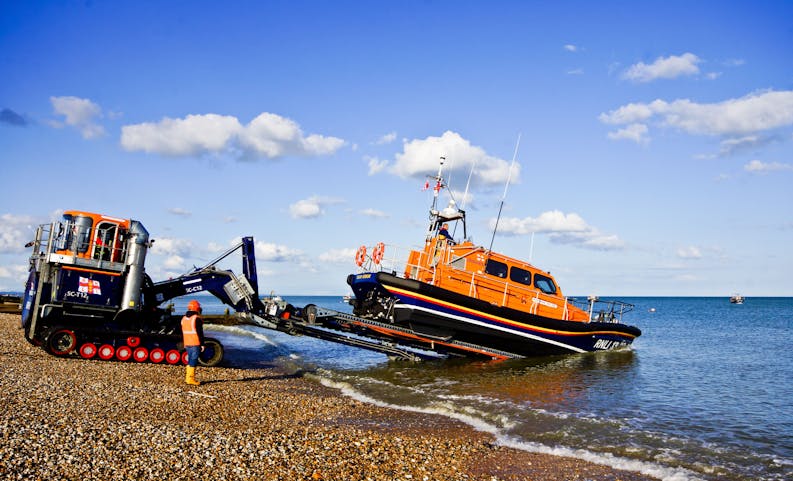
Both before and after the war, as more and more of the land was eaten away by the sea, the gangway out to the boathouse had to be extended, reaching 229 metres out to sea by 1958 when the beach was finally stabilised by a programme of sea defences, begun by West Sussex County Council in 1953. At this point, the piles supporting the structure, originally being at a depth of 7.9 metres, now had a depth of less than 0.6 meters. In view of the stabilisation, the RNLI decided to build a new boathouse and slipway, closer to the shore and this became operational in April 1960, officially opened by His Grace the Duke of Richmond in July of that year.
This boathouse and slipway were a well-known and much-loved sight until 2016 when they were demolished to make way for the new, onshore station which opened in 2017. And so, after 104 years of slipway launches, Selsey Lifeboat is now back to its starting point of launching across the beach – however this time using the latest technology, a long way from the rope and manpower of 1861.
This piece is courtesy of Dave Fotheringham, RNLI Selsey Lifeboat.

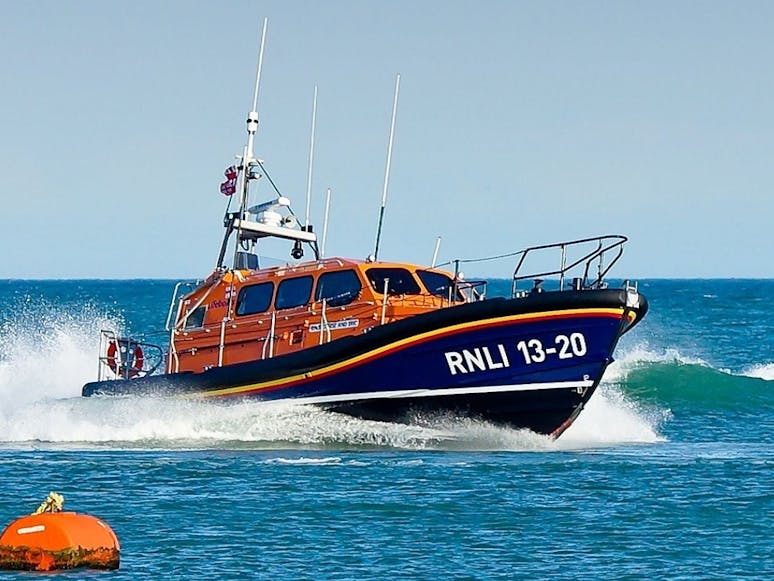
RNLI Selsey Lifeboat
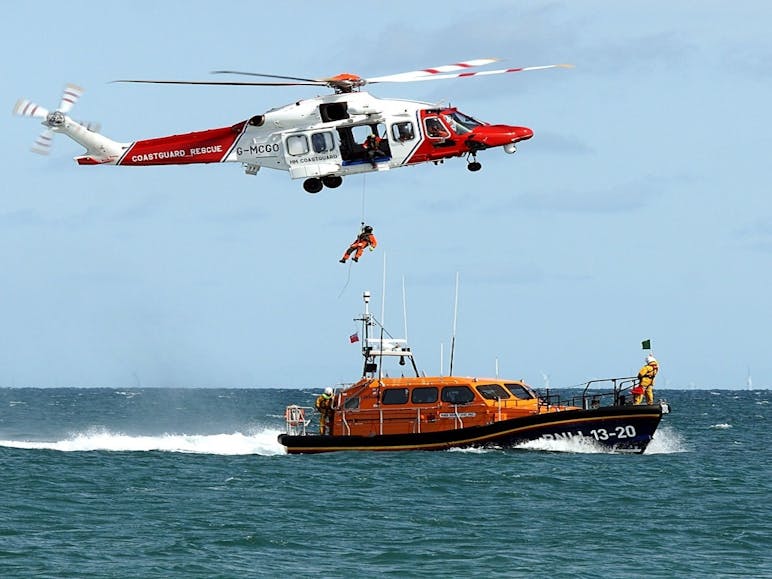
Coastguard helicopter and lifeboat in action
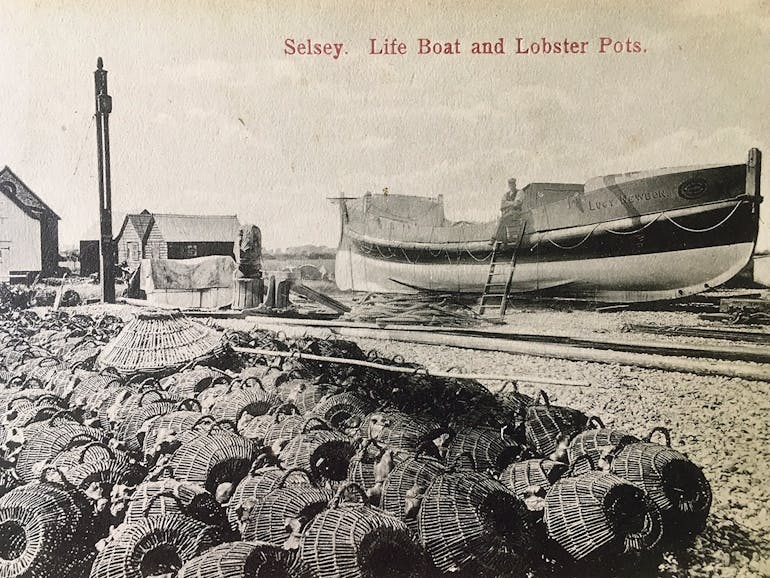
Lucy Newborn Lifeboat with lobster pots
Lifeboat History
| Name | Service Dates | Coxswain |
| Denise and Eric | June 2017 - present | Rob Archibald (2020 - present) Martin Rudwick (1998 - 2020) |
| Betty and Thomas Moore | 2008 - present | |
| Voluntary Worker | 1983 - 2006 | Martin Rudwick (1998 - 2020) Mike Grant (1978 - 1998) |
| City of London | 1998 - 2008 | Martin Rudwick (1998 - 2020) |
| Peter Cornish | 1969 - 1983 | Mike Grant (1978 - 1998) Bill Jones (1973 - 1978) Ron Arnell (1962 - 1973) |
| Charles Henry | 1938 - 1969 | Ron Arnell (1962 - 1973) Len Lawrence (1961 - 1962) Douglas Grant (1952 - 1961) Leslie Pennycord (1936 - 1952) |
| Canadian Pacific 2 | 1929 - 1937 | Leslie Pennycord (1936 - 1952) Frederick Barnes (1917 - 1936) |
| The Brothers | 1929 - 1937 | Leslie Pennycord (1936 - 1952) Frederick Barnes (1917 - 1936) |
| Canadian Pacific | 1929 - 1937 | Frederick Barnes (1917 - 1936) |
| Jane Holland | 1922 - 1927 | Frederick Barnes (1917 - 1936) |
| Reserve No. 3 | 1919 - 1922 | Frederick Barnes (1917 - 1936) |
| Lucy Newbold | 1894 - 1919 | Frederick Barnes (1917 - 1936) Thomas Sparshott (1897 - 1917) James Smith (1886 - 1897) |
| John and Henry Skynner | 1885 - 1896 | James Smith (1886 - 1897) James Lawrence (1861 - 1886) |
| The Friend (renamed Four Sisters) | 1865 - 1885 | James Lawrence (1861 - 1886) |
| The Friend | 1861 - 1865 | James Lawrence (1861 - 1886) |


